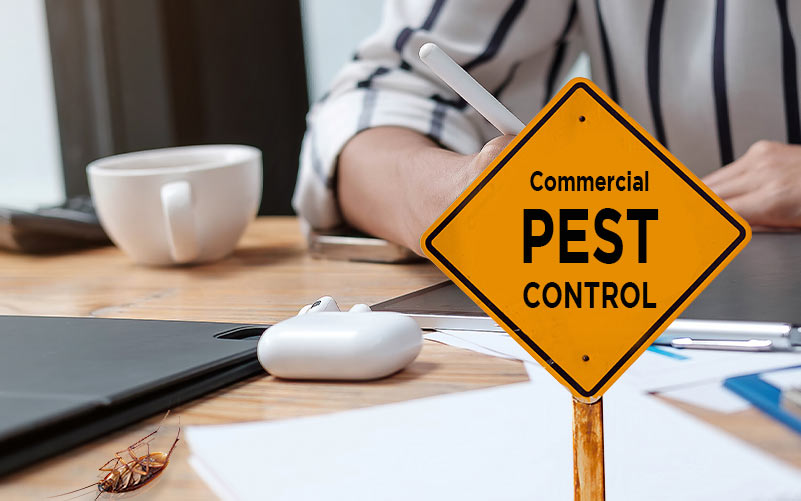Bed Bug Treatment Breakdown: Contrasting Chemical Vs. Non-Chemical Solutions
In the realm of insect control, specifically when managing the persistent issue of bed pests, the selection between chemical and non-chemical treatment solutions can be a pivotal one. Both methods supply distinct advantages and downsides, influencing variables such as effectiveness, safety and security considerations, and general cost. By checking out the nuanced information of each method, a clearer understanding of which path to go after in addressing a bed pest invasion can be acquired.
Effectiveness of Chemical Therapies
Chemical therapies for bed pest invasions have actually been widely identified for their rapid and powerful efficacy in eradicating these pests. When thinking about the efficiency of chemical treatments, it is essential to understand that they can provide a thorough and fast remedy to a bed pest issue.
In addition, chemical treatments have the advantage of offering residual results, suggesting that they can continue to get rid of bed pests even after the preliminary application. This recurring action is especially advantageous in combating any type of possible re-infestations. Additionally, the quick activity of chemical treatments can bring relief to individuals encountering severe bed insect problems, permitting them to gain back control of their living rooms swiftly.
Security Worries With Chemical Solutions
When using chemical remedies for bed insect therapy is ensuring the security of passengers and the environment,One vital element that needs careful consideration. While chemical therapies can be efficient in eradicating bed insects, they may present dangers otherwise taken care of correctly. Among the main security interest in chemical remedies is the potential injury they can cause to human health and wellness. Direct exposure to certain chemicals made use of in bed insect therapies can result in respiratory system issues, skin irritation, or other negative responses, specifically in people with pre-existing conditions or level of sensitivities. In addition, inappropriate application or dose of chemical pesticides can result in toxic residues lingering in the treated location, positioning lasting health and wellness dangers to occupants.
Furthermore, the ecological impact of chemical services is an additional substantial factor to consider. Some pesticides utilized in bed pest therapies may be dangerous to helpful insects, wild animals, and environments if they leach right into the soil or water systems. It is important to utilize chemical treatments judiciously, adhering to safety and security guidelines, and thinking about much less harmful options to reduce these threats and make sure the effective and secure management of bed insect infestations.
Advantages of Non-Chemical Approaches
Considering the prospective security worries and environmental effect connected with chemical options for bed bug therapy, checking out non-chemical approaches presents an encouraging alternative with a number of distinctive advantages. Non-chemical therapies are eco pleasant, as they do not add to air or water air pollution, making them a lasting choice for parasite control.
In addition, non-chemical remedies can be efficient in targeting bed insects, consisting of hard-to-reach locations where chemical therapies might not permeate - A1 charlotte pest control companies. Approaches such as warmth therapy, vacuuming, vapor cleaning, and bed mattress encasements give detailed removal without the usage of hazardous chemicals.
Limitations of Non-Chemical Treatments

In addition, non-chemical therapies often call for multiple applications to attain successful elimination. This can be taxing and may not constantly assure total removal of all bed pests and their eggs, specifically in hidden or hard-to-reach places.
Moreover, the success of non-chemical therapies heavily counts on proper application and thoroughness, which can be testing for individuals without specialist experience. Inadequate application of non-chemical approaches might result in incomplete elimination, bring about consistent look at more info invasions and the requirement for additional therapies.
For that reason, while non-chemical treatments have their benefits, it is vital to acknowledge these constraints and consider them when identifying the most effective approach for taking care of bed insect invasions.
Cost Contrast: Chemical Vs. Non-Chemical Options
Offered the restrictions related to non-chemical treatments, a vital aspect to assess in the context of bed bug administration is the price contrast between chemical and non-chemical alternatives. Chemical therapies usually include the application of pesticides by professionals, which can range from $250 to $900 per space, depending upon the intensity of the infestation and the dimension of the location to be dealt with. On the other hand, non-chemical therapies like heat therapy or heavy steam can be extra costly, with costs varying from $1,000 to $6,000 for an entire home. While the first price of chemical therapies might seem reduced, multiple therapies may be required to totally get rid of the problem, potentially boosting the total cost. On the other hand, non-chemical alternatives might offer a much more sustainable and environment-friendly remedy, although they can be cost-prohibitive for some individuals. Eventually, when taking into consideration the price of bed pest treatment alternatives, it is necessary to evaluate the upfront expenses against the efficiency and long-term sustainability of the chosen approach.
Verdict

Considering the potential safety and security problems and environmental impact associated with chemical services for bed bug therapy, right here exploring non-chemical techniques offers an encouraging alternative with several distinct advantages.Given the constraints linked with non-chemical treatments, an important facet to evaluate in the context of bed bug management is the expense comparison between chemical and non-chemical choices. In comparison, non-chemical therapies like heat treatment or vapor can be a lot more pricey, with expenses ranging from $1,000 to $6,000 for an entire home. While the first cost of chemical therapies may appear lower, multiple treatments may be needed to fully eradicate the infestation, possibly increasing the overall price.In next page final thought, when comparing chemical and non-chemical bed pest therapy options, it is crucial to think about performance, safety, advantages, restrictions, and cost.